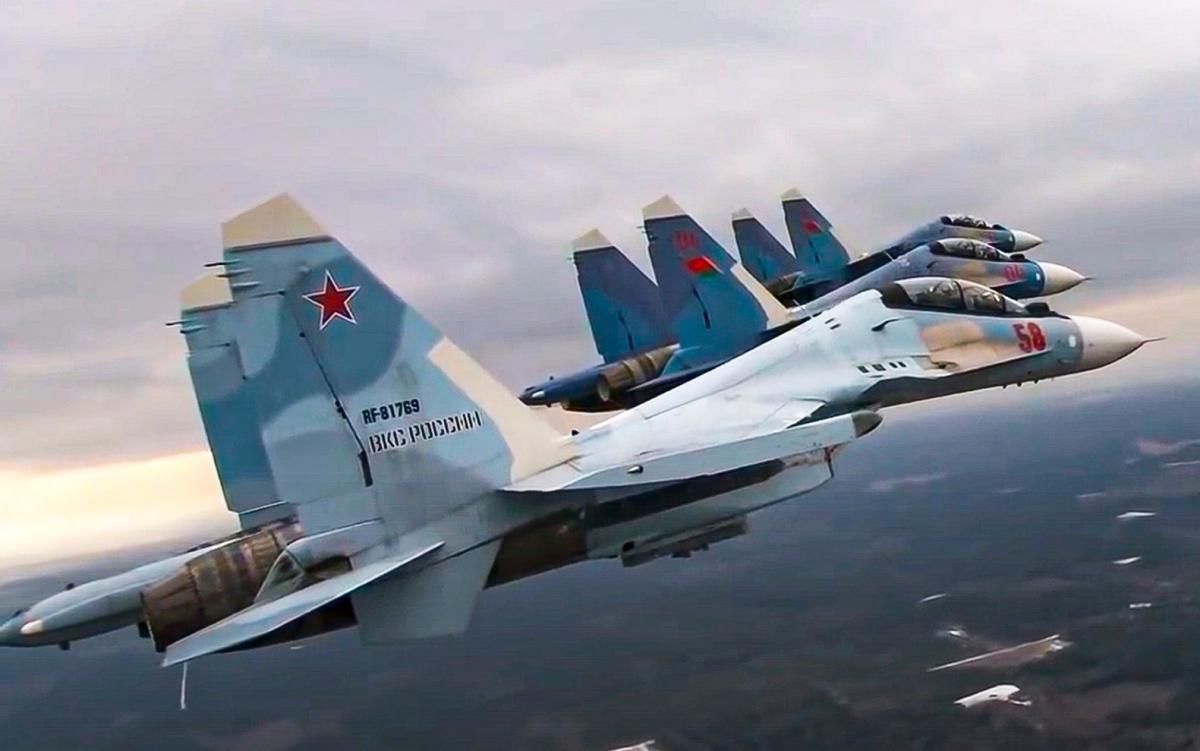
The Ukrainian air force went on an unprecedented aerial kill-streak last month. In 12 days starting on Feb. 17, the air force – which operates Ukraine’s warplanes and also its ground-based air defenses – claimed it shot down a staggering 13 Russian warplanes.
It’s not possible to independently confirm all the kills, and it’s possible the real number of shoot-downs is somewhat lower – or even higher.
But no one disputes that, last month, the Ukrainians shot down a lot of Russian planes. On average since Russia widened its war on Ukraine two years ago, the Russian air force and naval aviation have lost four planes a month to Ukrainian action. In the 24th month of the war, they may have lost at least three times that average.
The question is, how? What changed to make Russian planes more vulnerable, Ukrainian air defenses more deadly, or both? And is there a lesson for the wider world in that February aerial massacre?
It’s evident the Russian air force, which has deployed several hundred of its roughly 1,000 fighters plus several support planes for sorties over Ukraine, stepped up its operations in February. The Russian army was poised to finally push the ammunition-starved Ukrainian garrison out of the eastern city of Avdiivka – and the air force saw an opportunity to hasten the Ukrainians’ retreat.
The air force organized its 100 Sukhoi Su-34 fighter-bombers and similar number of Sukhoi Su-35 air-superiority fighters into flights of three, loaded up the two-seat Su-34s with satellite-guided glide-bombs and the single-seat Su-35s with anti-radar missiles and sent the flights to strike Ukrainian positions in and around Avdiivka.
The Russians’ overall sortie rate at the height of the Avdiivka battle in mid-February exceeded a hundred per day – likely matching their sortie rate during the headiest early days of the way two years ago. Every one of the planes was a potential target for the Ukrainians’ ground-based missile batteries.
All things being equal, more aerial targets means more shoot-downs. But the elevated pace of Russian flights might not be the only factor in the February kill-streak. For starters, the Ukrainians appear to have taken some of the components of their three American-made Patriot missile batteries – their best air-defense batteries – and organized them into mobile units.
Traveling quickly just behind the front line, a couple of Patriot quad-launchers, connected to long-range radars via a radio data-link, could ambush Russian jets as far as 90 miles away then hit the road before the Russians can fire back. It’s this tactic that seems to have allowed the Ukrainians to knock down several Russian jets late last year in what amounted to a preview of the bloodier February campaign.
But one key shoot-down, the destruction of a rare Russian Beriev A-50 radar plane over the Sea of Azov on Feb. 23, occurred 120 miles from the front line – too far for a one-ton Patriot. The only missile system that Ukraine has access to that ranges that far is the old, ex-Soviet S-200, which fires a hulking, eight-ton missile.
The Ukrainian air force retired its S-200s back in 2013, but reactivated some of them last year as surface-to-surface strike missiles. It’s possible – likely, even – that the air force is once again using the S-200s in their original surface-to-air role.
But what radars guide the S-200s? The original Soviet radars emit so much energy that they usually betray the coming missile-launch – and give the targeted pilots time to take evasive action. There’s a hint, however, that the Ukrainians have found a more subtle way of cueing their most powerful missiles.
Back in February 2023, 10 months before Russia-friendly Republicans in the U.S. Congress cut off U.S. aid to Ukraine, the administration of Pres. Joe Biden announced a $2.2 billion package of military aid that included this intriguing item: “equipment to integrate Western air-defense launchers, missiles and radars with Ukraine’s air-defense systems.”
Analysts widely read that verbiage as a nod to the U.S. Army’s Integrated Battle Command System, built by Northrop Grumman. IBCS isn’t a radar. It isn’t a missile.
No, it’s a suite of processors, radio links and algorithms that lets pretty much any air-defense radar and pretty much any air-defense missile work together. “IBCS enables the efficient and affordable integration of current and future systems,” Northrop Grumman explained.
The development of IBCS isn’t totally complete, yet, but it’s close. The Americans haven’t deployed any major IBCS components yet, but the Poles have. And the Poles, it’s worth noting, are among the biggest suppliers of air-defense equipment to the Ukrainians now that Republicans are blocking U.S. aid.
Even if it just got parts of IBCS, the Ukrainian air force could link up hundreds of long-range radars, including old Soviet models and the latest Western models, and use that comprehensive sensor coverage to guide all of its medium- and long-range missiles – again including Soviet and Western models.
Potentially all-seeing, heavily-armed and flexible, Ukrainian air-defenders may have been primed to take advantage of the opportunity Russian pilots presented them when the pilots surged into the air over Avdiivka. The shoot-downs didn’t slow until the battle in and around Avdiivka slowed.
If Ukraine did get some of the IBCS, its recent aerial kill-streak should be a ringing endorsement. That particular piece of kit works extremely well, and the United States and its allies should acquire it, as soon as possible.
Article From & Read More ( The one clever trick Ukraine uses to shoot down Russian planes - Yahoo! Voices )https://ift.tt/sJcdEjY
Tidak ada komentar:
Posting Komentar